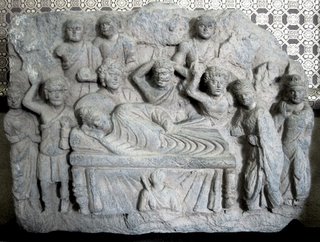When I go to the dentist for a filling I asked to be numbed, no hesitation and no doubt about it, ‘Novocaine, please‘. The pain of dental work or more accurately the fear of the pain has dogged me since childhood. Somebody from the congregation has booked himself and his wife in for dental work tomorrow; that’s Valentines Day. “Have you any advice on dealing with the fear and the pain”. My fleeting thought was to suggest they go out for a meal instead! And then we talked, all I had to offer was empathy.
Our conversation stimulated memories of dentists past. A Buddhist dentist whose assistant, also a Buddhist, tried to convince me not to have Novocaine. “It’s only pain, it will pass”! Teaching I was not ready to hear right then. And the Irish dentist, with a jewel set into his front tooth. In his care, while deep in the horror of a wisdom tooth extraction I heard, “everybody’s got to hurt, some times” coming from the sound system. It was such corny good timing, I had to restrain from laughing out loud. One can’t plan for those moments.
It’s natural enough to want to avoid pain, to be put out of ones misery. After that extraction I suffered the worst pain of my life. I remember thinking a deliberate blow to the head could not come too soon. It was that bad and pain killers had already failed me. Years latter I was told that “strong men” faint from having a ‘dry socket’ which is what I, unknowingly, was suffering from.
Physical extremity can be a great teacher simply because there is no getting away from it. Dental pain, so close to ones brain, seems to crush all reasoning power too. I eventually took stock, canceled a trip to the monastery and spent a week at our Hermitage in Wales. I had decided I’d just have to ‘sit it out’ and soon after that decision the pain started to subside; or was it the fear that subsided?



